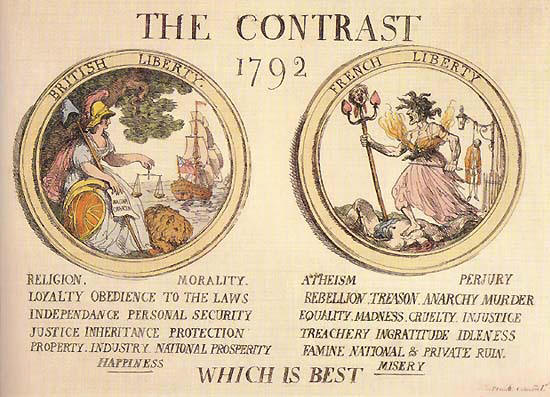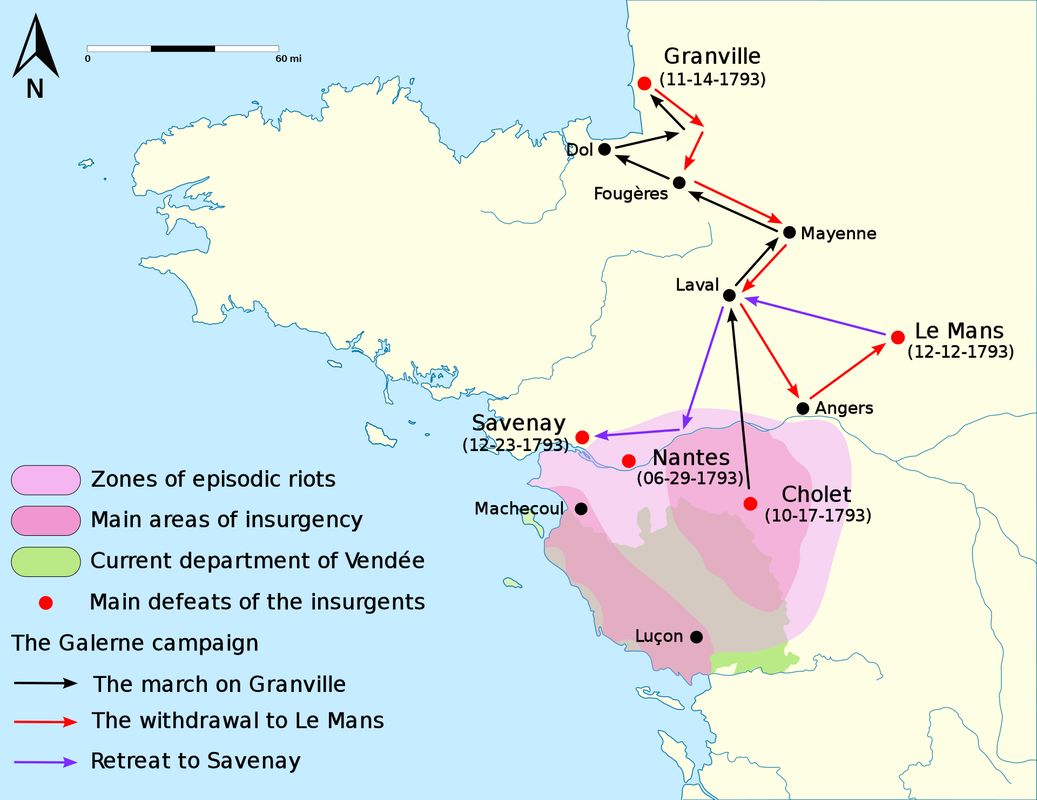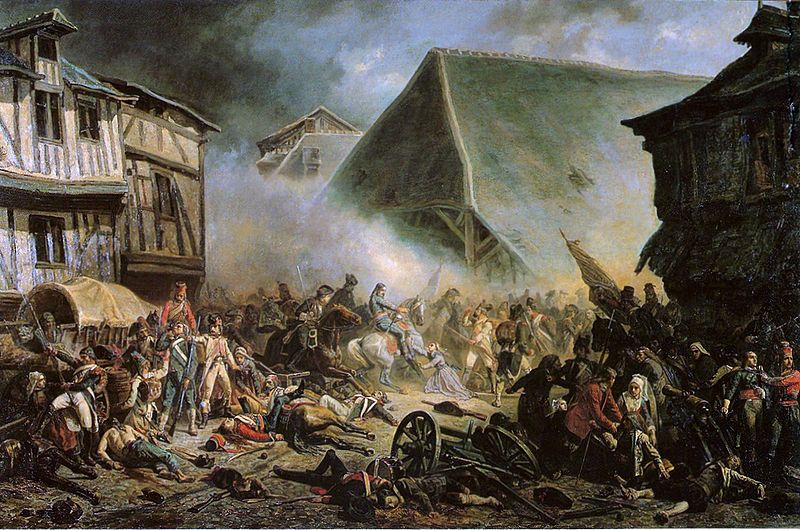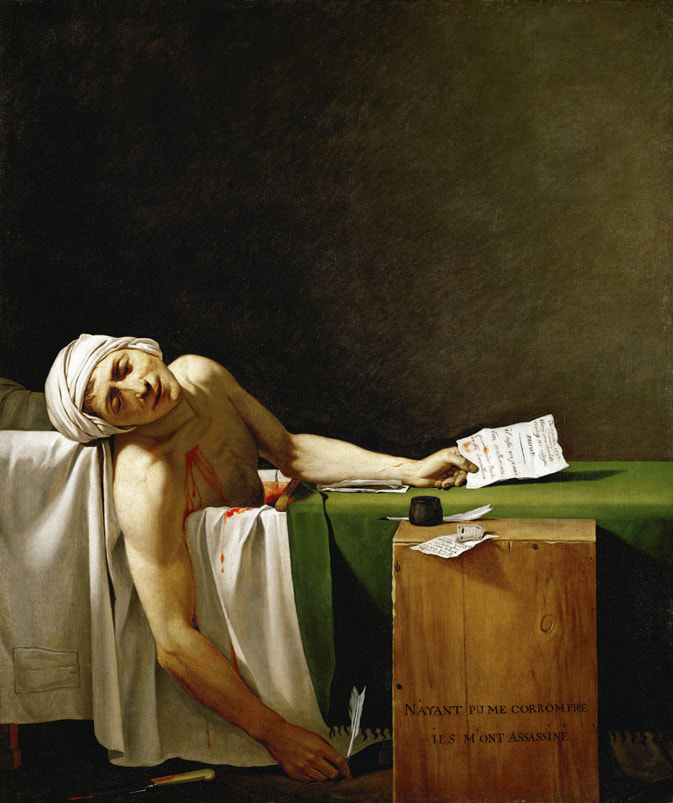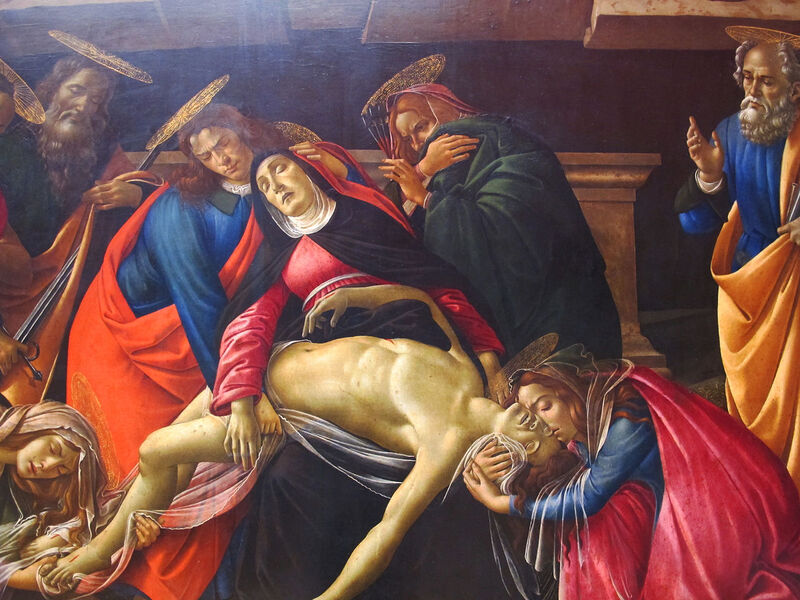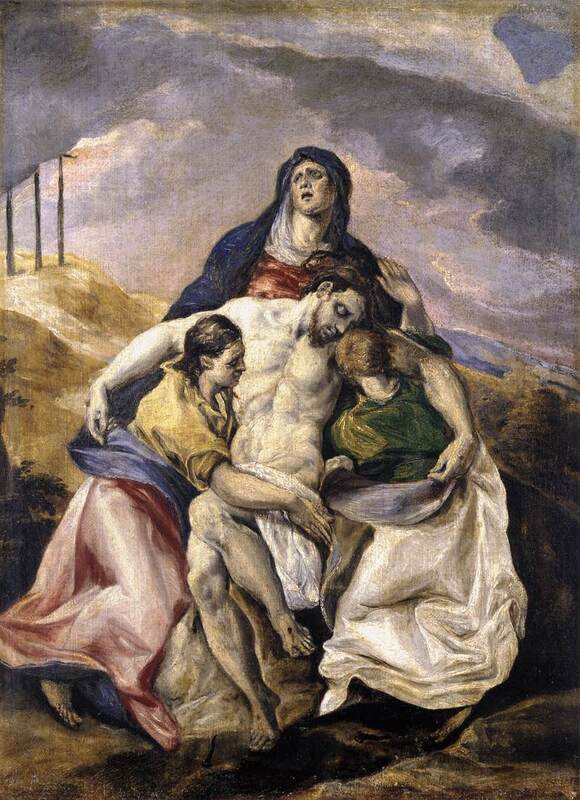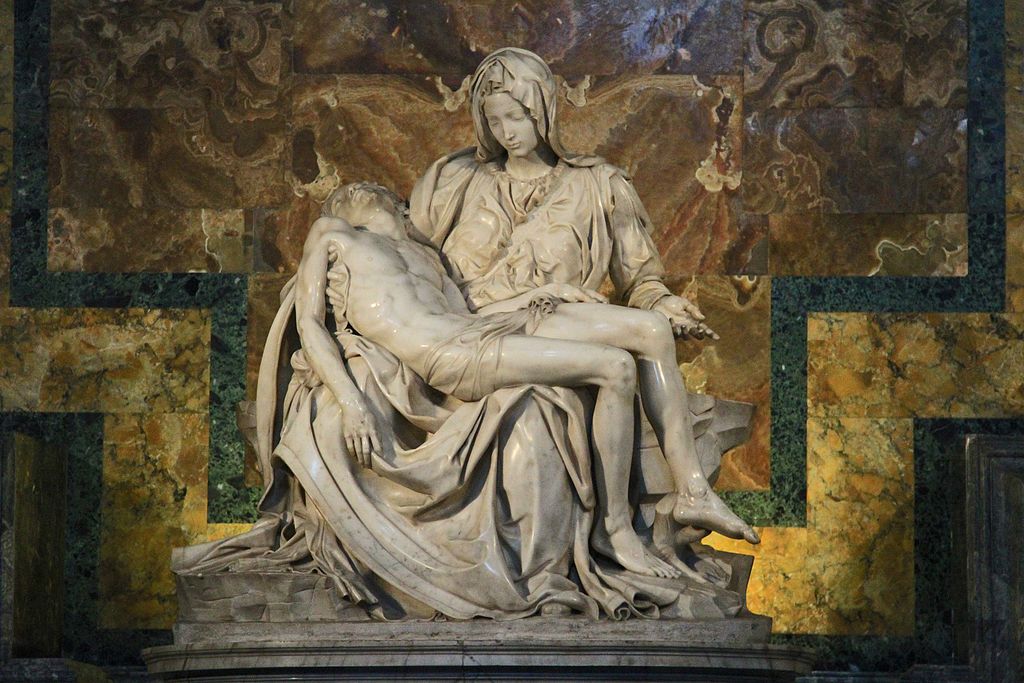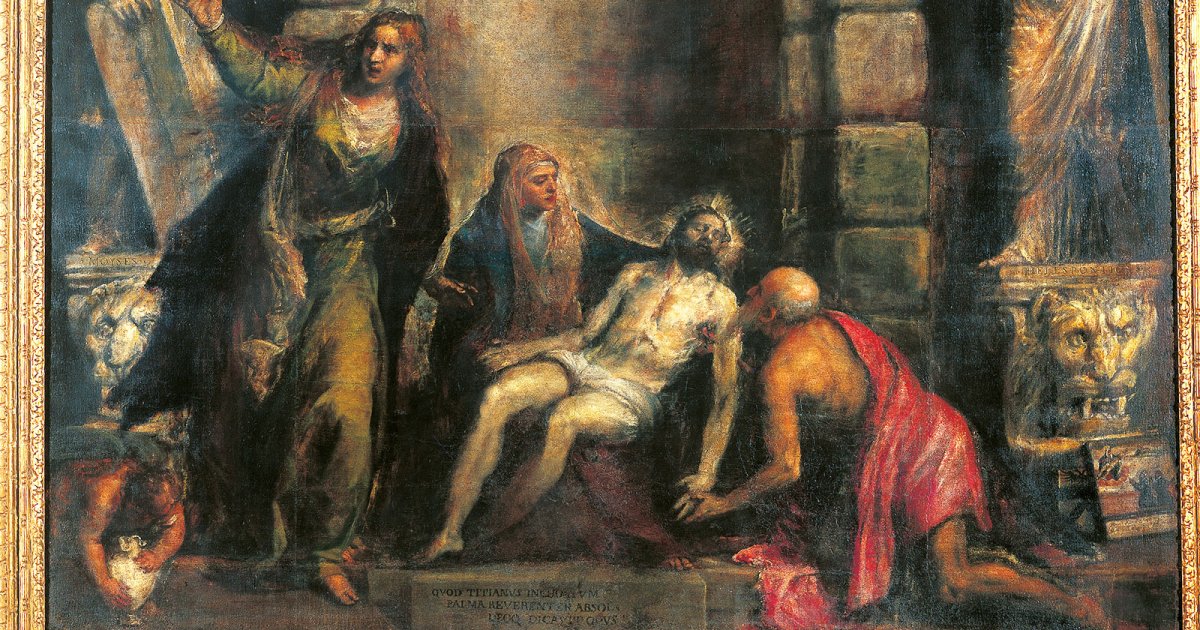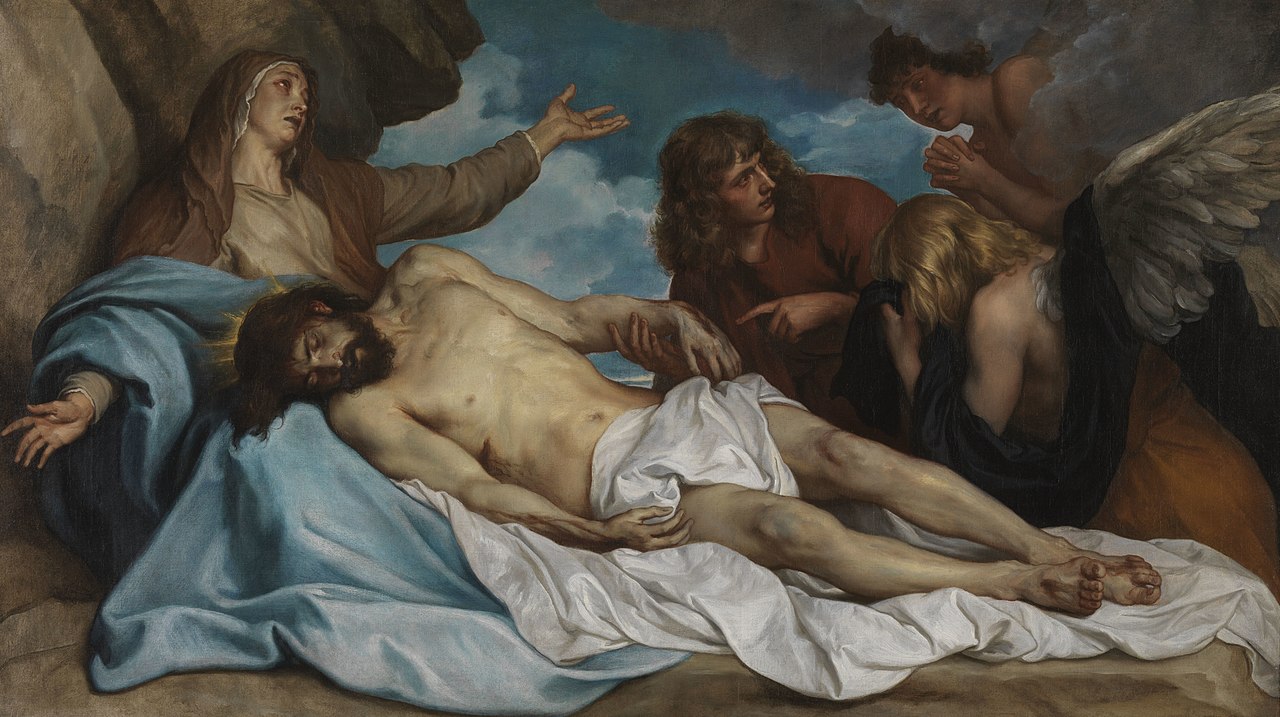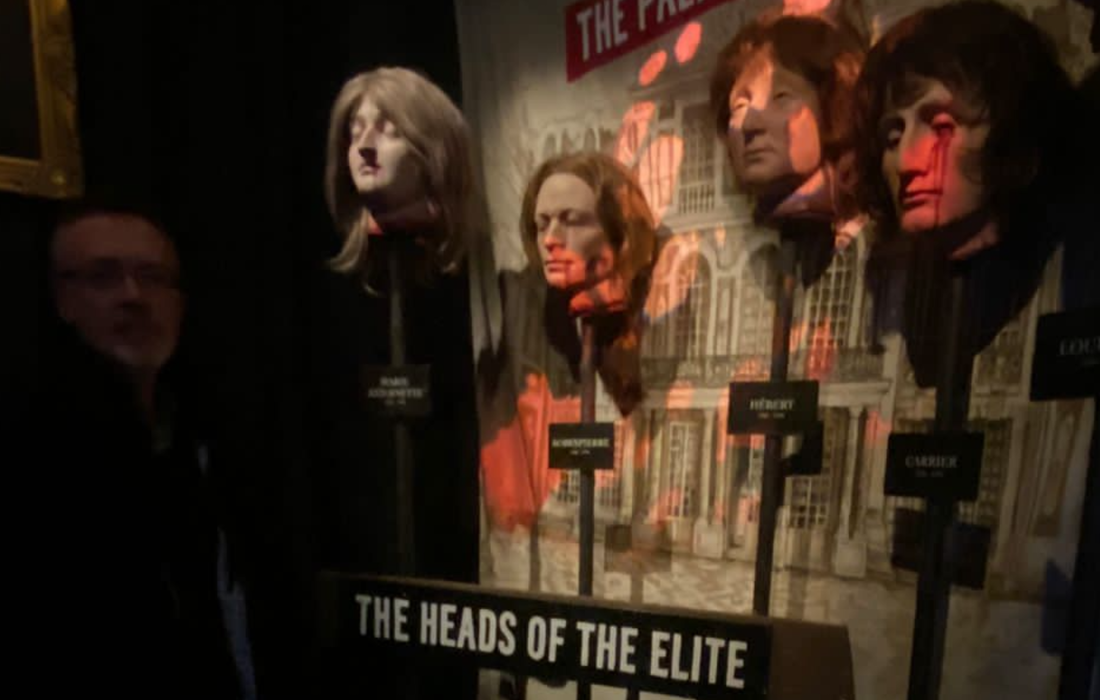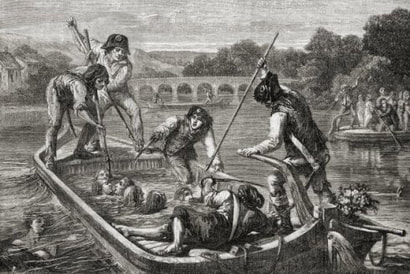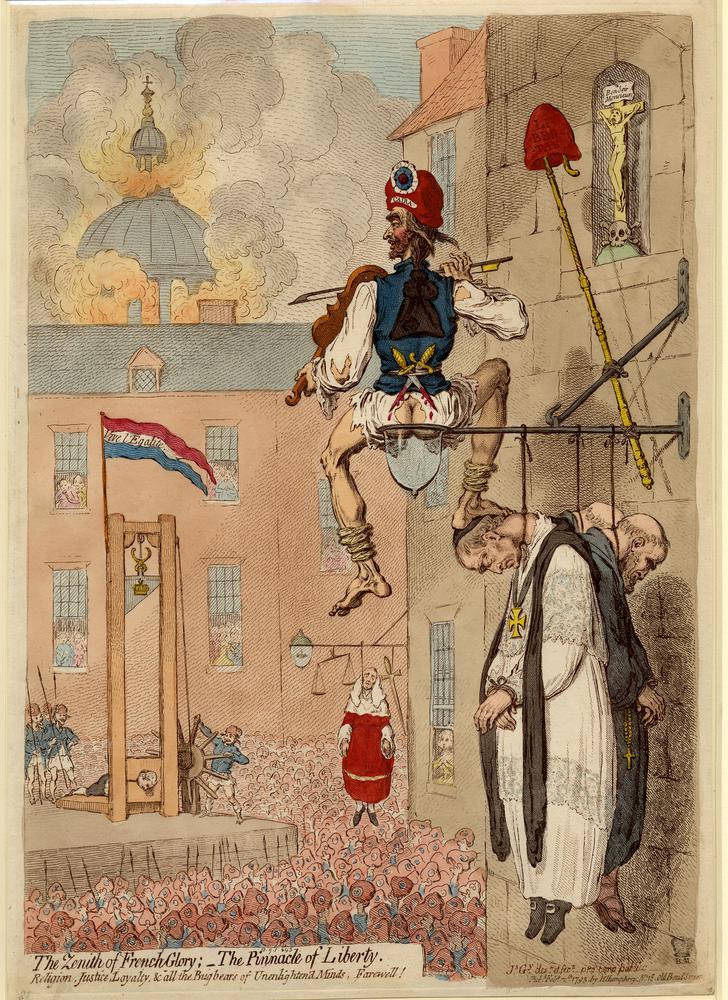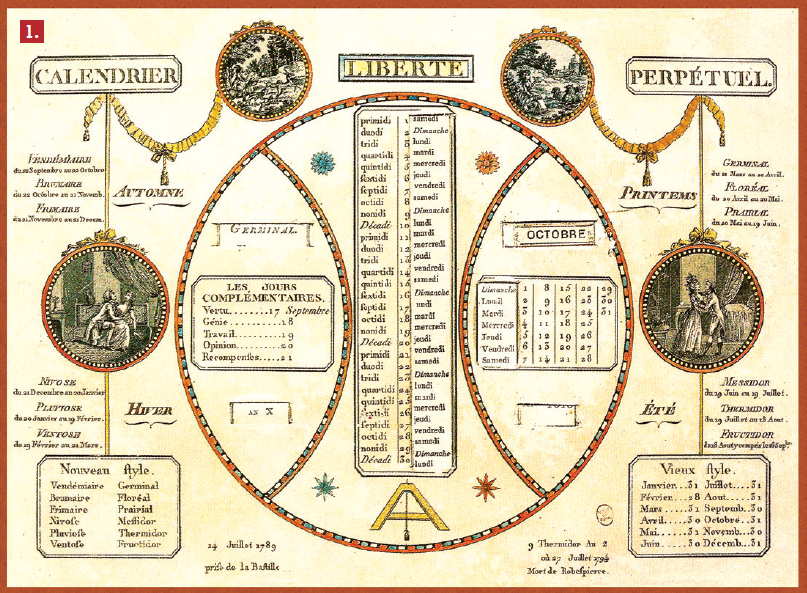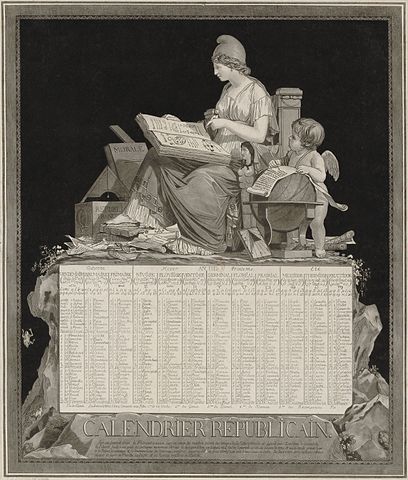Lesson 8 - The Terror
Causes of the Terror
The execution of Louis XVI shocked millions of people all over Europe. Louis' fellow monarchs were outraged. One by one, in the first months of 1793, they joined forces with Austria and Prussia in their war against France. The aim of this coalition, or alliance, was to destroy the new French Republic.
The execution of Louis XVI shocked millions of people all over Europe. Louis' fellow monarchs were outraged. One by one, in the first months of 1793, they joined forces with Austria and Prussia in their war against France. The aim of this coalition, or alliance, was to destroy the new French Republic.
|
Defeat in war
Far from scaring the revolutionaries in France, this made them more warlike than before. They wanted to fight these 'tyrants', as they called all kings, and spread the revolution to the rest of Europe. Rather than wait for the coalition to attack them, they declared war on its three latest members - Britain, Holland and Spain. France was now at war with most of Europe. Disaster immediately struck the French armies. Austrian forces beat them in a series of battles in the Netherlands. The French commander, General Dumouriez, abandoned his men and went over to the Austrian side. France seemed on the verge of defeat. |
Inflation and shortages
The war was only one of many difficulties facing the new government. A major problem was the high price of food. Prices were rising because, to pay for the war. the government was printing huge amounts of paper money called assignats . But the more bank notes it printed, the less they were worth: the currency was suffering from inflation. By February 1793 a bank note was worth only half the amount printed on it. As well as being expensive, bread was also scarce because farmers did not want to sell their grain for bank notes that were losing their value. Hungry sans culottes began raiding shops and food stores to get the food they could not buy.
Rebellion
A third major problem hit the government when, to defend the country, it ordered an extra 300,000 men to join the armies. This order was deeply unpopular. In the Vendée in western France, where many people were royalists, thousands of peasants joined in an armed rebellion against the government. In Paris, the war led to a conflict between two groups of politicians in the Convention: the Girondins, who held most of the important posts in the government, and the Jacobins, who were supported by the sans culottes. The Jacobins blamed the Girondins for France' s defeats on the battlefield, and for allowing food prices to rise. On 2 June an angry crowd of sans culottes broke into the Convention and expelled the leading Girondins. This triggered a string of revolts in the royalist provinces which supported the Girondins. By summer 1793, sixty out of eighty-three departments had joined the rebellion against the government. The Vendée south of Nantes was particularly impacted. Tens of thousands of civilians, royalists, Republican prisoners, and sympathisers with the revolution or the religious were massacred by both armies.
The war was only one of many difficulties facing the new government. A major problem was the high price of food. Prices were rising because, to pay for the war. the government was printing huge amounts of paper money called assignats . But the more bank notes it printed, the less they were worth: the currency was suffering from inflation. By February 1793 a bank note was worth only half the amount printed on it. As well as being expensive, bread was also scarce because farmers did not want to sell their grain for bank notes that were losing their value. Hungry sans culottes began raiding shops and food stores to get the food they could not buy.
Rebellion
A third major problem hit the government when, to defend the country, it ordered an extra 300,000 men to join the armies. This order was deeply unpopular. In the Vendée in western France, where many people were royalists, thousands of peasants joined in an armed rebellion against the government. In Paris, the war led to a conflict between two groups of politicians in the Convention: the Girondins, who held most of the important posts in the government, and the Jacobins, who were supported by the sans culottes. The Jacobins blamed the Girondins for France' s defeats on the battlefield, and for allowing food prices to rise. On 2 June an angry crowd of sans culottes broke into the Convention and expelled the leading Girondins. This triggered a string of revolts in the royalist provinces which supported the Girondins. By summer 1793, sixty out of eighty-three departments had joined the rebellion against the government. The Vendée south of Nantes was particularly impacted. Tens of thousands of civilians, royalists, Republican prisoners, and sympathisers with the revolution or the religious were massacred by both armies.
The Death of Marat
No-one better personified the violence that was engulfing the revolution and no other death better encapsulated the divisions that were pulling France apart, than the person and death of Jean-Paul Marat. Marat was born in Boudry in Neuchatel, now part of Switzerland. Typically, his family was French Huguenot (Protestant) in origin and for most of his 20s he lived in England and practiced as a doctor. From the outbreak of the revolution he dedicated himself entirely to spreading the ideas of the radical wing of the revolution that after 1792 became known as Jacobin. His newspaper L'Ami du peuple was highly critical of post revolutionary authorities and until the death of the king, Marat was often forced into hiding or exile. His time spent hiding in the Parisian sewers worsened his already debilitating skin disease. After the beheading of the King, Marat turned his newspaper on the Girondins and it was this attack that led to his assassination by Charlotte Corday.
No-one better personified the violence that was engulfing the revolution and no other death better encapsulated the divisions that were pulling France apart, than the person and death of Jean-Paul Marat. Marat was born in Boudry in Neuchatel, now part of Switzerland. Typically, his family was French Huguenot (Protestant) in origin and for most of his 20s he lived in England and practiced as a doctor. From the outbreak of the revolution he dedicated himself entirely to spreading the ideas of the radical wing of the revolution that after 1792 became known as Jacobin. His newspaper L'Ami du peuple was highly critical of post revolutionary authorities and until the death of the king, Marat was often forced into hiding or exile. His time spent hiding in the Parisian sewers worsened his already debilitating skin disease. After the beheading of the King, Marat turned his newspaper on the Girondins and it was this attack that led to his assassination by Charlotte Corday.
|
|
|
Marat was in his bath (because of his skin condition) on 13 July 1793, when Corday appeared at his flat. She gave him a list of supposed Girondin traitors and he promised to have them all guillotined. She then stabbed him through the heart with a kitchen knife that she had hidden in her dress.
|
His death was immediately turned into a political martyrdom by the Jacobin Committee of Public Safety. David's idealised painting, that depicts Marat in Christ like form, was part of a process that turned Marat into a secular saint. After the revolution, Marat's reputation fell; the memorials to him were destroyed and his remains were removed from the Pantheon. However, over 100 years later, after the October Revolution 1917 in Russia, Marat's name was rehabilitated by the Bolshevik government. Marat became a popular name for Russian babies and Russian streets and Battleships were also named after him.
|
Again, the Google Arts and Culture App has an exhibition of the painting which allows you to use your phone or iPad to view the painting in augmented reality, as if you were seeing the painting for real. Click here to access it.
Activity 1
1. Explain briefly the three problems faced by the revolutionary government (the National Convention) in the first half of 1793.
2. Who was Jean-Paul Marat? How and why was his death used by the revolutionaries? You will need to watch the documentary films (Schama from 38 minutes) and refer to the painting by David and those below in order to fully answer the question.
1. Explain briefly the three problems faced by the revolutionary government (the National Convention) in the first half of 1793.
2. Who was Jean-Paul Marat? How and why was his death used by the revolutionaries? You will need to watch the documentary films (Schama from 38 minutes) and refer to the painting by David and those below in order to fully answer the question.
The Terror
|
|
The Law of Suspects
The Terror began with a 'Law of Suspects' in September 1793. As a precursor to the encouragement of denunciations common in 20th century authoritarian states such as Stalin's Russia and Hitler's Germany. Groups of citizens in every town had to draw up lists of people they suspected of opposing the government. Almost anyone could fall under suspicion. The Law said that 'suspects were people who by their behaviour, their contacts, their words or their writings, showed themselves to be ... enemies of Liberty.' In the year that followed, over a quarter of a million suspects were arrested and put in prison. |
Many suspects were sent to Paris for trial by the Revolutionary Tribunal. This was a special court set up to deal with political offences. Its judges could impose sentences of imprisonment, deportation or death. Around half the sentences they passed were death sentences.
|
The guillotine
Death sentences were carried out by beheading prisoners with a recently invented machine. Known as a guillotine after the person who first suggested using it, Doctor Guillotin, it was meant to be quicker and less painful than the methods of execution used before the Revolution. An English journalist described how it worked: He [the prisoner] is first tied to a plank of wood of about eighteen inches [45cm] broad, and an inch [2.5cm] thick, with cords about the arms, body and legs; this plank is about four feet [1.2m] long, and comes almost up to the chin; the executioner then lays him on his belly on the bench, lifts up the upper part of the board which receives his neck, inserts his head, then shuts the board and pulls the string fastened to a peg at the top of the machine, which lifts up a catch. The axe falls down, and the head, which is off in an instant, is received in a basket ready for that purpose, as is the body in another basket. Around 17,000 suspects were executed by guillotine during the Terror. One of the first to die was Marie Antoinette whose trial began on 14 October 1793, and two days later she was convicted by the Revolutionary Tribunal of high treason and executed by guillotine on the Place de la Révolution. Even Tom Paine, who had been elected to the Convention was arrested, imprisoned and sentenced to death. He narrowly escaped death when his gaoler mistakenly failed to bring him to the place of execution. |
|
|
The Committee of Public Safety took very strong measures to crush the revolts in the countryside. Over a hundred Representatives of the Convention were sent to the provinces with instructions to do anything necessary to restore order. When the guillotine proved too slow to execute captured rebels, he had them drowned in boat-loads in the River Loire (left). At least 2,000 died in these drownings at Nantes. In Lyon, nearly 2,000 rebels were executed. To speed up the executions, prisoners were lined up in front of open graves and blasted into them with cannon fire. |
|
The Terror begins to work
|
(Below - The Zenith of French Glory; The Pinnacle of Liberty [1793] an English perspective on the Terror by James Gillray.)
|
|
It must be remembered that the terror was an emergency measure set up to crush the counter-revolution and to win the war. In August 1793 the Convention ordered a 'Mass Levy' of the French people. This meant that every citizen had to take an active part in the war effort. Unmarried men had to join the armies to fight. Married men were to make weapons for them. Women were to make tents and serve in hospitals. Children were to make bandages and gunpowder.
The Mass Levy increased the French armies to 800,000 men, nearly three times the size of the Coalition's armies. Representatives of the Convention made sure that strict discipline was kept. Generals who did not win battles were replaced by younger officers who had proved their ability in action. The Committee also tried to halt the rise in food prices with a Law of the Maximum in September 1793. This said that the prices of forty goods, such as corn, flour, firewood and oil, must stay fixed until further notice. So too must people's wages. Breaking the Maximum carried the death penalty. Terror and the Church As part of a process or 'dechristianisation' the Terror led to the disappearance of the Christian religion in many parts of France. Claiming that Christianity was no more than 'superstition', sans culottes closed down churches, robbed them of their bells and silver, and sacked their priests. In many towns, a 'Cult of Reason', based on revolutionary ideas such as Liberty and the worship of Marat took the place of Christianity. A Festival of Reason was held in the Notre Dame Cathedral, which was renamed 'The Temple of Reason'. |
As part of the campaign against Christianity, the Convention introduced a new calendar that logically decimalised time. Years were no longer counted from the birth of Christ but from September 1792, when the Republic was founded. 1792 was re-named Year One, so the Terror took place in Year Two. Each year was divided into twelve thirty-day months with names describing their weather or growing seasons. Months were divided into three ten-day weeks. Sunday was abolished. The Calendar was used for about 12 years and was also used in other areas under French rule, including Belgium, Luxembourg, and parts of the Netherlands, Germany, Switzerland, Malta, and Italy.
|
See this short article that explains French attempts to de-Christianise the calendar.
And click here to find out your birthday according to the revolutionary calendar. |
Results of the Terror
The Committee of Public Safety achieved what it set out to do. It saved France from collapse. By mid 1794 the French armies had driven their enemies right out of France and had occupied the Austrian Netherlands. The Representatives on Mission had crushed all the revolts in the Provinces. And although prices were still rising, the Committee had managed to avoid a famine. The price of success had been high. Between 35,000 and 40,000 people had been executed or had died in filthy, overcrowded prisons. Everybody's rights and freedoms had been severely limited. Prices were still rising. And the Committee had became a kind of twelve-man dictatorship.
The coup of Thermidor
By the summer of 1794 the Committee was very unpopular. Many deputies in the Convention disliked it because they thought it was too powerful. Some disliked it because they feared ending up under the guillotine. Others disliked it because they could not see any need for the Terror now that the revolts were over and France was winning the war. Even the sans culottes, its strongest supporters, were unhappy because their wages were held down by the Maximum law, while prices were still rising.
The Committee of Public Safety achieved what it set out to do. It saved France from collapse. By mid 1794 the French armies had driven their enemies right out of France and had occupied the Austrian Netherlands. The Representatives on Mission had crushed all the revolts in the Provinces. And although prices were still rising, the Committee had managed to avoid a famine. The price of success had been high. Between 35,000 and 40,000 people had been executed or had died in filthy, overcrowded prisons. Everybody's rights and freedoms had been severely limited. Prices were still rising. And the Committee had became a kind of twelve-man dictatorship.
The coup of Thermidor
By the summer of 1794 the Committee was very unpopular. Many deputies in the Convention disliked it because they thought it was too powerful. Some disliked it because they feared ending up under the guillotine. Others disliked it because they could not see any need for the Terror now that the revolts were over and France was winning the war. Even the sans culottes, its strongest supporters, were unhappy because their wages were held down by the Maximum law, while prices were still rising.
|
On 27 July 1794-9 Thermidor, Year Two in the new calendar - the Convention decided to get rid of the Committee's leading member, Robespierre, along with his supporters. Robespierre had spoken of the existence of internal enemies and conspirators within the Convention and the governing Committees. But he refused to name them, which alarmed the deputies who feared Robespierre was preparing another purge of the Convention.
Twenty-one were arrested and guillotined the following day. A further ninety-six were executed the day after. With Robespierre dead, the Convention reduced the power of the Committee, freed hundreds of suspects, abolished the Maximum and got rid of the Revolutionary Tribunal. The Terror thus came to an end. |
|
Activity 2
1. Explain the Law of Suspects. Why do you think many innocent people may have been denounced?
2. Make a note of some of the worst things that happened during the Terror. Do some additional research to add to the limited information contained on this page.
3. In the context of the Terror, explain what was meant by de-Christianisation. Research some additional examples of de-Christianisation from the Terror and try to find some visual examples. Find out when you were born according to the Republican Calendar.
4. Watch the film on the Thermidorian Reaction. Why was Robespierre killed?
5.How is it possible to argue that the Terror was a success? Remember the Terror wasn't just mindless violence.
Conclusion
1. Explain the Law of Suspects. Why do you think many innocent people may have been denounced?
2. Make a note of some of the worst things that happened during the Terror. Do some additional research to add to the limited information contained on this page.
3. In the context of the Terror, explain what was meant by de-Christianisation. Research some additional examples of de-Christianisation from the Terror and try to find some visual examples. Find out when you were born according to the Republican Calendar.
4. Watch the film on the Thermidorian Reaction. Why was Robespierre killed?
5.How is it possible to argue that the Terror was a success? Remember the Terror wasn't just mindless violence.
Conclusion
The French Revolution isn't really over yet, but that's enough for now. We'll pick up the story again in our next unit which looks at Napoleon and the impact of the French Revolution in Switzerland and later in Europe.
|
Serious conclusion
|
Silly conclusion (password 'bisb')
|

